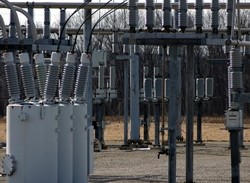 Lost in Transmission
Lost in Transmission
Ofgem have announced new measures to benefit renewable generators and it’s another subsidy, paid for by consumers. This time however the subsidy is somewhat different as it’s targeted on the cost of transporting energy from the power plant or generation point to the ultimate destination.
In industry parlance this transportation is known as transmission and distribution.
Transmission is the main wires running from the power station throughout the country and often likened to the motorway network; whilst Distribution is the A and B roads of the local distribution network which takes the transmitted energy and delivers it down to the customer’s meter.
Traditionally transmission has cost more where it has had to travel further and with power stations biased to the North and coasts of the country the transmission cost has differed relative to areas further distant.
Now though Ofgem and the main network provider, National Grid, have a new approach.
Under the changes, which come into effect in April 2016, wind farms will only have to pay transmission charges when the wind is blowing.
According to the Daily Telegraph this means that the transmission charges paid by a wind farm in Northern Scotland would reduce dramatically from their current level of £36.98 kWh to £20.84 kWh, saving a 100MW wind farm more than £1 million a year.
Ofgem’s senior partner for transmission, Martin Crouch, said:
“The changes to transmission charging are the result of an extensive consultation process and detailed analysis. The new arrangements more accurately reflect the costs of Britain’s diverse energy generation and will lead to lower costs.”
The intention is claimed to be that though this will initially benefit existing wind plant in the wilds of Scotland, it will ultimately encourage increasing development closer to recipient cities and despite the initial increase in bills required to subsidise the charges, will result in more localised power plants catering for the local area and thereby paying lower transmission charges.
For now however it is another subsidy to hit the cost of energy alongside the Climate Change Levy, Higher Distribution Cost Levy (again for remote Scottish regions), the Feed In Tariff, the Renewables Obligation, Contracts for Difference, the Renewable Heat Incentive……. The list goes on and the promised positive impacts are still a long way off.
